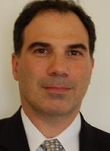How Recent Regulatory And Payer Developments Will Impact U.S. Biosimilar Access
By Anita Burrell, Anita Burrell Consulting LLC

Biosimilars were touted as a tool for payers to gain savings in specialty markets, but a recent survey by Avalere of the top 25 payers in the U.S. (about 189 million covered lives) using publicly available coverage policies found that biosimilars are commonly subject to step-through polices, including those that require the patient to “fail” first on a branded product, and only then will the payer cover a biosimilar of that same branded product (i.e., the biosimilar’s reference product). Policies like this may be why although the Congressional Budget Office (CBO) originally estimated a 10-year decrease in federal spending of $5.9 billion attributable to “follow on biologics”/biosimilars in 2009, it is estimated the actual savings have only been 8 percent of that amount (approximately $241 million). So what market access issues do biosimilars face in the U.S., and where could we go from here?
In the first part of this three-part series, four experts in the field — Gillian Woollett, senior VP, Avalere; Nicolas Arkells, CEO, Manticore Consulting Group; Sheila Frame, VP and head, Sandoz Biopharmaceuticals, North America; and Roman Casciano, general manager, Analytica-Laser — discussed the current status of the market for biosimilars and explore some of the reasons for the difference between the U.S. and Europe. In this second installment, we explore the recent developments in the U.S. marketplace from both the regulatory and payer viewpoints, with an emphasis on how these may lead to opportunities for biosimilar manufacturers.
Anita Burrell: Scott Gottlieb has recently made some remarks which would make us think that there will be increased emphasis on the availability of biosimilars as one way to address the issue of drug prices in the USA. What are your thoughts here? Will we see game-changing new policies from the government in this area?
 Gillian Woollett, Avalere: The FDA commissioner, Dr. Scott Gottlieb, has indeed made comments on this in a series of three recent speeches. The FDA has promised a biosimilars action plan as part of its Healthy Innovation, Safer Families: FDA's 2018 Strategic Policy Roadmap. It will be important to see those plans, even if we expect them to be largely aspirations rather than specific regulatory activities.
Gillian Woollett, Avalere: The FDA commissioner, Dr. Scott Gottlieb, has indeed made comments on this in a series of three recent speeches. The FDA has promised a biosimilars action plan as part of its Healthy Innovation, Safer Families: FDA's 2018 Strategic Policy Roadmap. It will be important to see those plans, even if we expect them to be largely aspirations rather than specific regulatory activities.
Fundamentally, both Commissioner Gottlieb and HHS Secretary Azar are advocates of free market competition as a way to mitigate high drug prices — a priority of this administration. But this can only happen if products are approved and launched commercially. The FDA has a role here, but its actions alone will not suffice.
In addition, as part of the most evident form of competition (and the nearest to a generic parallel that we have for biologics), interchangeable biologics are the subject of discussion. It was an achievement when the FDA’s Draft Guidance “Considerations in Demonstrating Interchangeability With a Reference Product” was published in January 2017 — and that timing is highly pertinent, coming shortly before the change of administrations and before Dr. Gottlieb became commissioner. The expectations for studies to support the FDA designation so that some biosimilars can be substituted in the manner of generic drugs (subject to state law) are arguably excessive. That interchangeability is now seen as the most effective way to reduce prices of these often expensive, yet marvelous life-changing products, does not change the fact that most biologics are physician-administered, so the opportunity for substitution will never occur. We must take care here to be precise and note that physicians can switch their patients to the cheaper biosimilar today, and an FDA designation will not change this. Indeed, the FDA has stated that it agrees with the EMA regulators’ conclusion that the biosimilars they have already approved are interchangeable for the purpose of physician prescribing.
It will be important to watch whether the FDA adjusts its interpretation of the “Safety Standards for Determining Interchangeability” as articulated in BPCIA, whether clinical switching studies are always going to need to be done, and if this will be expected of the U.S. reference product (itself scientifically unnecessary here). Extensive experience in other highly regulated markets with switched patients, switched products from use of comparability, and an increasingly convincing scientific literature (here) would suggest such studies do not tell us anything new, and hence are likely unethical.
 Roman Casciano, Analytica-Laser: I think that perhaps one of the key policy shifts here will be the increasing acceptance of information and analysis that comes from sources other than clinical trials to support new treatments. While it remains to be seen if it happens in practice, the shift toward regulators’ acceptance of modeling approaches, Bayesian inference, and real-world evidence could indeed impact biosimilars. This applies both to the regulatory context as well as the uptake of biosimilars, with the idea of virtual bioequivalence and the use of real-world data for label expansion and to mitigate concerns in terms of real-world performance of a therapy.
Roman Casciano, Analytica-Laser: I think that perhaps one of the key policy shifts here will be the increasing acceptance of information and analysis that comes from sources other than clinical trials to support new treatments. While it remains to be seen if it happens in practice, the shift toward regulators’ acceptance of modeling approaches, Bayesian inference, and real-world evidence could indeed impact biosimilars. This applies both to the regulatory context as well as the uptake of biosimilars, with the idea of virtual bioequivalence and the use of real-world data for label expansion and to mitigate concerns in terms of real-world performance of a therapy.
 Sheila Frame, Sandoz: President Trump’s embrace of generic and biosimilar competition as a key to lowering brand-name drug prices is an important step forward for patients coping with skyrocketing healthcare costs. Sandoz is a global leader in generic and biosimilar medicines and is committed to playing a leading role in driving access to high-quality medicine worldwide. Patients will benefit most from meaningful initiatives that ensure robust competition and timely access to these life-saving medicines. We look forward to working with the entire administration to ensure the earliest access to high-quality medicines while helping reduce the cost burden on the health system.
Sheila Frame, Sandoz: President Trump’s embrace of generic and biosimilar competition as a key to lowering brand-name drug prices is an important step forward for patients coping with skyrocketing healthcare costs. Sandoz is a global leader in generic and biosimilar medicines and is committed to playing a leading role in driving access to high-quality medicine worldwide. Patients will benefit most from meaningful initiatives that ensure robust competition and timely access to these life-saving medicines. We look forward to working with the entire administration to ensure the earliest access to high-quality medicines while helping reduce the cost burden on the health system.
Burrell: Do you think there are other ways that the role of biosimilars could be leveraged, e.g., PBMs making pass-through payments to patients (United Healthcare)?
 Nicolas Arkells, Manticore: Economically, what United Healthcare has done is more of a marketing maneuver. Regardless of how it is spun, if pass-through payments are made to the consumer immediately or used to lower insurance premiums across the board for patients, it is still accomplishing a reduction in cost. This is because by law, insurance companies have strict rules about allowable profit margins and how surplus revenue is distributed. Further, premium and cost sharing is highly variable from policy to policy, so it would be very difficult to determine impact on per-patient savings, and any of these ratios should be regarded with skepticism. Patients, unfortunately, have the least bargaining power in the value chain; thus, they are last to receive any savings and typically reach their out of pocket maximums regardless of whether they are prescribed a biosimilar or biologic.
Nicolas Arkells, Manticore: Economically, what United Healthcare has done is more of a marketing maneuver. Regardless of how it is spun, if pass-through payments are made to the consumer immediately or used to lower insurance premiums across the board for patients, it is still accomplishing a reduction in cost. This is because by law, insurance companies have strict rules about allowable profit margins and how surplus revenue is distributed. Further, premium and cost sharing is highly variable from policy to policy, so it would be very difficult to determine impact on per-patient savings, and any of these ratios should be regarded with skepticism. Patients, unfortunately, have the least bargaining power in the value chain; thus, they are last to receive any savings and typically reach their out of pocket maximums regardless of whether they are prescribed a biosimilar or biologic.
Burrell: So how do you think we can improve the market access situation for biosimilars moving forward? What evidence is needed and for whom?
Casciano: I believe it is necessary to demonstrate systematically how biosimilar adoption can accrue value for all the stakeholders in the real-world context. This requires a full view of the impact of shifting policies on the population outcomes and overall economics viewed with an integrated mentality. For example, does a new policy get more patients onto the right therapy and keep them on it for a longer period of time? What does this do to the overall outcomes of patients at the plan level? How does this impact spending on the drug category and other medical costs? We need to move away from siloed thinking to accomplish this and leverage the latest real-world data and predictive analytic approaches in our assessments.
Woollett: Fundamentally, biosimilars are going to need to gain market share in order to succeed commercially. To the extent that physicians perceive an interchangeable biologic to be a “better biosimilar,” there is a problem. Meanwhile, the FDA’s data expectations for such an interchangeability designation continue to be excessive. Biosimilars cannot succeed as long as there is a price on a switch from reference to biosimilar (and between biosimilars). Meanwhile, the financial incentives do not align, either.
As a scientific matter, the comparability standard, without any clinical switching studies, is the established standard for interchangeability at the FDA and in other highly regulated markets. Any biologic, originator or biosimilar, is always interchangeable with itself after such a change, and the label of the product does not change. There is a vast amount of real-world experience with biologics since 1996, when comparability principles were first introduced by the FDA, that the regulatory science supports no changes in clinical outcomes (the one exception being a manufacturing change to Eprex in Europe around turn of the century).
We have also published previously that an interchangeable biologic is simply a previously approved biosimilar on which additional studies have been completed. The product itself is the same.
Further, it is important to remember that as a U.S. statutory matter, interchangeability is only about substitution by other than the prescriber (and subject to state law). Indeed, recently at the Medicines for Europe Biosimilars meeting in London, Dr. Leah Christl of FDA said that for the purposes of physician-prescribing, FDA agrees with EMA regulators that all biosimilars are already interchangeable. The FDA has to say this more loudly, more clearly, and in a manner that is citable for that message to permeate the practice of medicine in the U.S.
This is one of those instances where physician awareness is going to be critically important. And the good news is that the experience post approval with biosimilars supports the regulatory premises upon which their approval was based. The evidence is what would be expected.
Arkells: Patients can also be reassured about biosimilars by using current real-world evidence from the EU to demonstrate long-term safety and efficacy across a large patient pool. To make this data more personable and less abstract, it should be done in coordination with biosimilar success stories from American families. Use of relatable patients, along with organized data, will make these statistics come to life in a manner that is tangible for patients. This should also be done with a message of decreasing healthcare costs, while expanding patient access.
Frame: All decision makers have a role in ensuring patients and healthcare systems see the full benefit of biosimilars: Policy frameworks need to be created in order to incentivize the use of biosimilars in both the near- and long-term. We also need to continue to evolve our legal framework to prevent unnecessary delays related to intellectual property disputes and our regulatory, development, and manufacturing processes as market dynamics change. Unbiased information should continue to be shared by credible sources, including EMA, FDA, health ministries, physicians, nurses, and other key stakeholders.
From a regulatory approach, we think it’s important to look at:
- Tailored approaches to clinical trial design based on specific molecule
- Addressing efficiency for multiple marketing authorizations based on patents
- Establishing a global reference medicine
Regarding pricing and market access policies, we should avoid mandatory discounts, which discourage market entry and ensure that tenders include market participation of several biosimilar manufacturers and reflect total value vs. price alone. Focused U.S. efforts addressing the rebate wall, reimbursement, and other policies that do not reflect the 10 years of real-world experience with biosimilars (interchangeability and switching) are also critical to realizing the full potential of these important medicines. A fair framework in litigation terms will be equally crucial.
Conclusion
Given the status of current biosimilar coverage and positioning within treatment pathways, it is clear that there remains a substantial amount that needs to be done to meet the expectation and potential of biosimilars in the U.S. market. Drivers of EU adoption, such as tendering and patient/physician education, may have a role in the U.S., but only if we can remove the market access obstacles that currently impede progress. In the final article in this series, we consider the role of real-world evidence and get tips on improving market access from our experts.
References:
- Capturing the Benefits of Competition for Patients (Mar. 7, 2018), Advancing Patient Care Through Competition (Apr. 19, 2018), and Keynote Address by Commissioner Gottlieb to the 2018 FDLI Annual Conference (May 3, 2018)
- Leah Christl at Medicines for Europe, 16th Biosimilars Meeting, London, April 26-27, 2018
- Mark McCamish et al, “Toward Interchangeable Biologics,” Clinical Pharmacology & Therapeutics, DOI: 10.1002/cpt.39
About the Participants:
Gillian Woollett, senior VP, leads the Avalere FDA Practice. She provides the "prequel" of scientific and regulatory strategic policy expertise that supports medicinal products gaining approval at the FDA in a manner that allows them to be successful in the public and private reimbursement world. She is building a bridge for Avalere clients from the FDA space into the traditionally separate Centers for Medicare & Medicaid Services and healthcare policy/business world. Prior to joining Avalere, Woollett was chief scientist at Engel & Novitt, LLP, VP of science and regulatory affairs at BIO, and AVP of biologics and biotech at PhRMA. She has been an appointee on federal advisory committees to the CDC and the Department of Commerce. She has a D.Phil. in immunology from the University of Oxford and an MA and BA in the natural sciences tripos (biochemistry) from the University of Cambridge.
Nicolas Arkells is the CEO at Manticore Consulting Group, a global health economics and outcomes consulting firm. He has over 15 years of leadership experience ensuring organizational commitment to statistical analysis and implementation. His law and science juris doctorate concentrated on intellectual property, which encouraged his research in biotechnology, market access, policy, regulatory strategy, and patent law. His MBA focused on the application of analytics to provide solutions to real-world problems in the healthcare industry. He is certified in medical devices and pharmaceuticals by the Regulatory Affairs Professionals Society, Lean Six Sigma black belt trained in the healthcare industry, agile certified as a PSM and PSPO, and certified in global human capital through Columbia University. He has been recognized for excellence in legal research, leadership, and alternative dispute resolution.
Sheila Frame is VP and head of Sandoz Biopharmaceuticals, North America, responsible for the development and commercialization of the biosimilar medicines portfolio in the U.S. and Canada. She has more than 20 years of pharmaceutical experience and serves as a member of the Sandoz U.S. Executive Committee. Frame held the role of worldwide general manager for the Immunoscience business at Bristol Myers Squibb (BMS), a role which encompasses responsibility for the commercialization of Orencia for the treatment of RA, with worldwide sales of over $2 billion, as well as the commercial development of BMS’s important pipeline assets in the therapeutic area. Prior to joining the pharmaceutical industry, she worked as a professional lobbyist for the Canadian National Railway. She began her professional career holding senior positions with the Government of Canada as a legislative assistant, where she took 17 bills through the House of Commons and Senate.
Roman Casciano is the general manager of Analytica Laser, a Certara Company. He is responsible for the coordination and management of the strategic and scientific teams of Analytica Laser and supports the company’s clientele as a market access strategist and tactician, as well as an expert in the domains of real-world evidence and economic and disease modeling. Casciano was one of the founding members of the Analytica Group in 1997 and has deep experience in developing and compiling the evidence necessary to support pricing, reimbursement, market access, and coverage decisions for health technologies around the world. He has experience across the product life cycle, including spearheading stakeholder engagement activities with U.S. and European regulators, payers, and technology assessors.
About the Author:
 Anita Burrell, principal of Anita Burrell Consulting LLC, has 23 years of leadership experience in the pharmaceutical industry. She is a founding member of the Aurora Project, which seeks to explore and promote patient-centricity in the industry and is an adjunct professor at the Ernest Mario School of Pharmacy at Rutgers University. As a consultant, she has helped companies to: understand market dynamics and payer behavior, design Big Data platforms, develop predictive models to inform health technology assessment submissions, and understand the implications of digital health and possibilities to use behavioral economics. She holds a BA (Hons) in economics from the University of Stirling, an MA in economics from Dalhousie University, and an MBA from Kingston University.
Anita Burrell, principal of Anita Burrell Consulting LLC, has 23 years of leadership experience in the pharmaceutical industry. She is a founding member of the Aurora Project, which seeks to explore and promote patient-centricity in the industry and is an adjunct professor at the Ernest Mario School of Pharmacy at Rutgers University. As a consultant, she has helped companies to: understand market dynamics and payer behavior, design Big Data platforms, develop predictive models to inform health technology assessment submissions, and understand the implications of digital health and possibilities to use behavioral economics. She holds a BA (Hons) in economics from the University of Stirling, an MA in economics from Dalhousie University, and an MBA from Kingston University.
